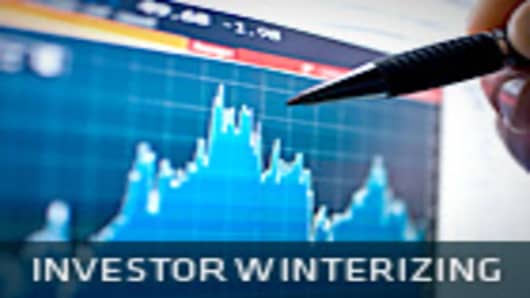September has almost always been a bad one for the stock market, so investors have good reason to welcome October, which—despite a couple of famous crashes—is generally an up month.
It was in October four years ago that the Dow 30 and S&P 500 hit new highs. Since then, we've seen a series of peaks and valleys, with a world of worry eating away at valuations.
The last six months have been particularly frustrating for investors; since stocks hit their post-recession peak in March, it's been one drag or another—Middle East turmoil, a Japanese nuclear meltdown, the reflaring of the European debt crisis, and a slowing U.S. economic recovery.
Still, investors may have have something to look forward to. Years after midterm elections are normally good ones for the market when there's a split government, as is the case now, because the dissenting political parties keep a lid on budget-busting initiatives. So the payoff may come yet.
Late October is often the beginning of a multi-month march higher for stocks, intensifying in November and December, and reaching all the way into February. That was the case last year.
What's more, 2012 is an election year, and when incumbent presidents are in re-election mode and handing out the goodies, the market tends to rise; only twice in the past century has the S&P 500 posted an annual loss (one of them was 2008) during a presidential election year.
And, if that weren't enough, according to Standard & Poor's, history also shows — since 1945 — whenever the S&P 500 lost 10 percent or more in the third quarter (it was 12.1 percent this year), the index gained an average 7.2 percent in the fourth quarter, while rising eight out of nine times.
This fall, however, there's little in the way of the fundamentals to suggest historical trends will play out.
Government debtis weighing on Europe and the U.S., with emerging market economies pulling the cart, though less forcefully than before. Commodity price volatilityhas upset consumer and corporate balance sheets. The Treasury markethas become a safe haven, with little return.
Still, some analysts say corporate earningsare holding up. Companies as diverse as Oracle , Nikeand General Mills recently reported better-than-expected second-quarter results, and Honeywell Internationalsaid it expectsthird-quarter earningsto be at the high end of its range.
Others, however, have lowered guidance. Texas Instruments is among those concerned about the global slowdown.
Given all that, our "Investor Winterizing" special report this year is more cautious in tone and defensively based than usual.
Large-capcompanies, such as Honeywell, are the subject of one of our two equity articles—how multinationals, featuring good dividends, are safe-haven income producers. Consumer staples are also among the sectors we expect to perform the best.
Another such area is foreign bonds, especially those from Asia, where debt is not a problem.
And in keeping with our cautious approach, we take a look at inflation hedges.
Finally, given all the volatility we've seen of late, we'd be remiss not to provide some advice on dealing with that, should there be more to come. So check out our story on volatility.
Hold on to your hat...and your money.




